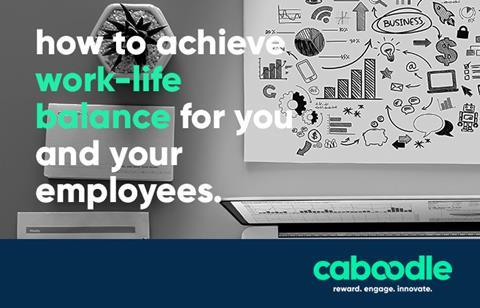
Work-life balance is one of the most talked about HR topics in recent times. A quick web search reveals that many young people are prioritising work-life balance even over job security, while nearly a third of employees in the UK say they have a poor work-life balance. It isn’t just about reducing people’s working hours, it’s about increasing employee job satisfaction and making your organisation more attractive to talented potential recruits.
Benefits of work-life balance
The benefits of work life balance include:
- Improved job satisfaction
- Improved productivity
- Improved reputation as an organisation, helping to become an employer of choice
- Reduced absenteeism
- Reduced staff turnover
- Reduced levels of stress.
Each of these benefits has further positive knock-on effects. For example, with reduced absenteeism comes lower recruitment and training costs. It also allows you to continuously improve and build on the talent you’ve retained.
Where to start
Start by understanding your employees and their attitudes towards work-life balance. This also goes for line managers. Start by discussing with them about introducing more work-life balance practices and whether its viable for them to be implemented. In some cases, line managers may feel these practices could negatively affect output. Talk to them and try to find a solution.
Discussion with employees about work-life balance is also necessary. It’s important to understand their needs and how you can adhere to them.
Best work-life balance practices
Once you’ve got an idea about how work-life balance practices are likely to be received, you can start considering how you’re going to implement them.
Flexible working
One of the most common work-life balance practices is flexible working. This can involve having more flexible start and finish times as well as allowing employees to work from home. All employees have the legal right to ask for flexible working through making a statutory application, providing they’ve worked for their employer for at least 26 weeks. Employers are required to hold a meeting to discuss the employee’s request, discuss the advantages and disadvantages of the application and offer an appeal process.
Examples of flexible working include:
- Working from home
- Switching to part-time work
- Compressed hours – where full-time hours are worked over fewer days
- Flexitime
- Annualised hours – where the employee works a certain number of hours per year
- Staggered hours – where an employee will have different working times from their colleagues
- Phased retirement.
Ensuring regular breaks
The last thing you want is for employees to become burnt-out. Some employees might be not taking their lunch breaks or even working more hours than they should. Keep a close eye on this and make sure employees take regular breaks and finish when they should. Also, try to establish the cause of why they aren’t taking breaks or finishing late and discuss it with them if needs be.
Vary working hours
Depending on the nature of your organisation or industry, it could be that there are times where workload significantly varies. For times where workload is reduced, try to cut working hours. This might help you prevent employees taking overtime or working more hours than they should.
Introduce work-life balance coaching and training
Make sure that managers, particularly those new to the company are aware of the company’s policy on work-life balance including legislation and practices.
Introduce Holiday Trading
Having a holiday trading scheme allows employees to buy extra holidays on top of their annual allowance. For more info on holiday trading, take a look at our holiday trading benefits blog.
We could be seeing a generational shift in attitudes towards work, with younger people more interested in work-life balance than generations before them. There’s no better time to introduce work-life balance practices than now!























